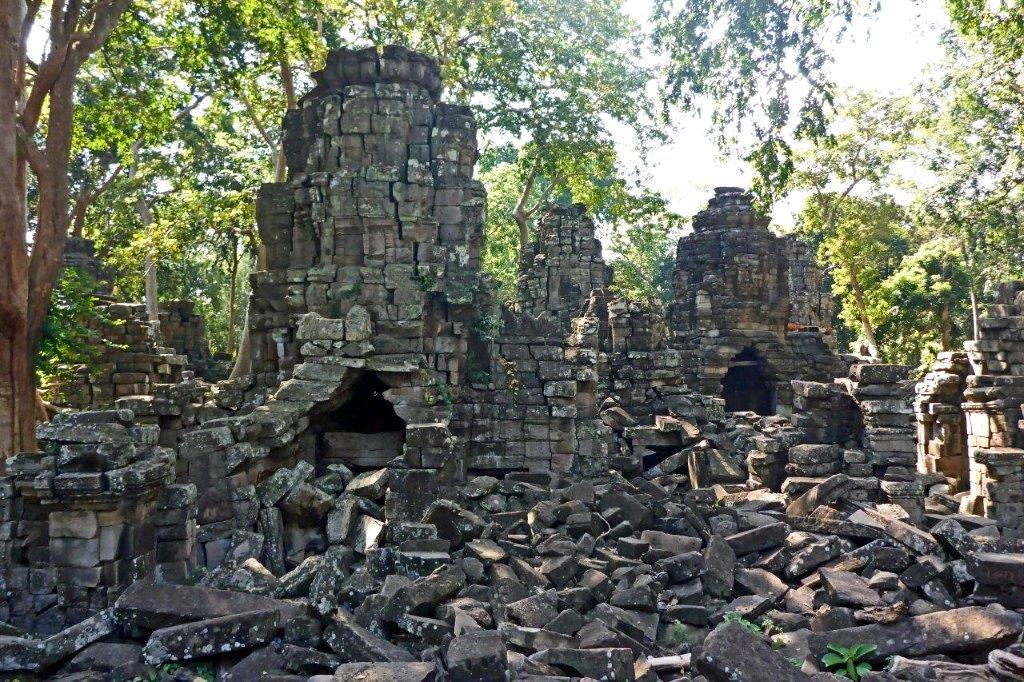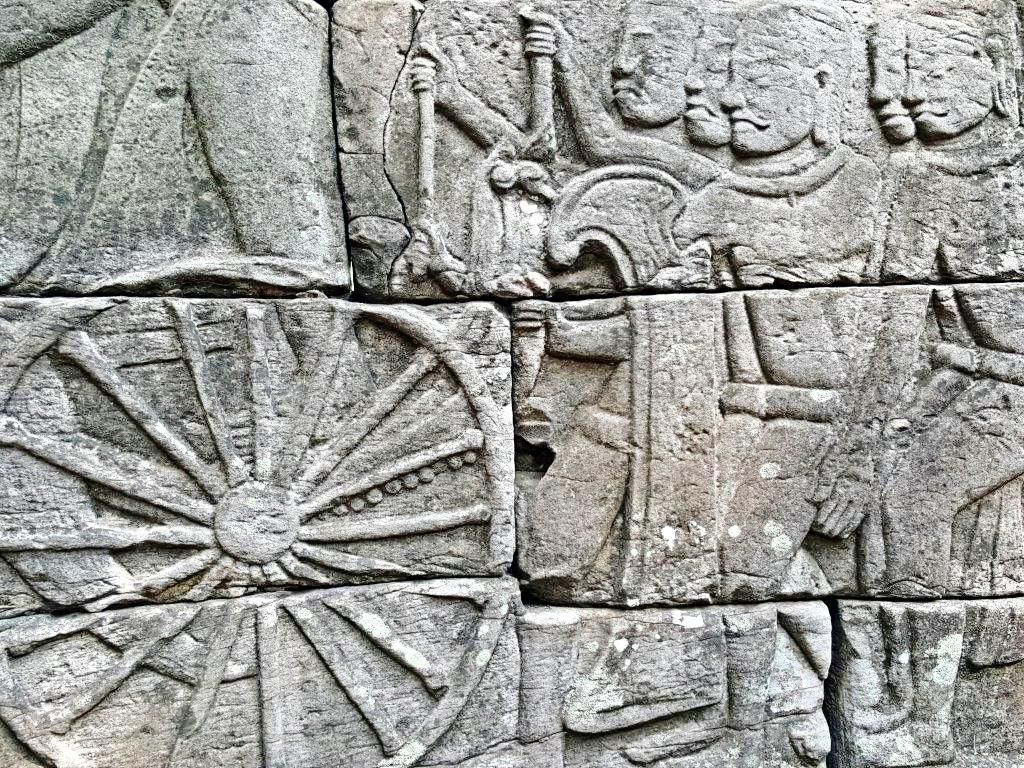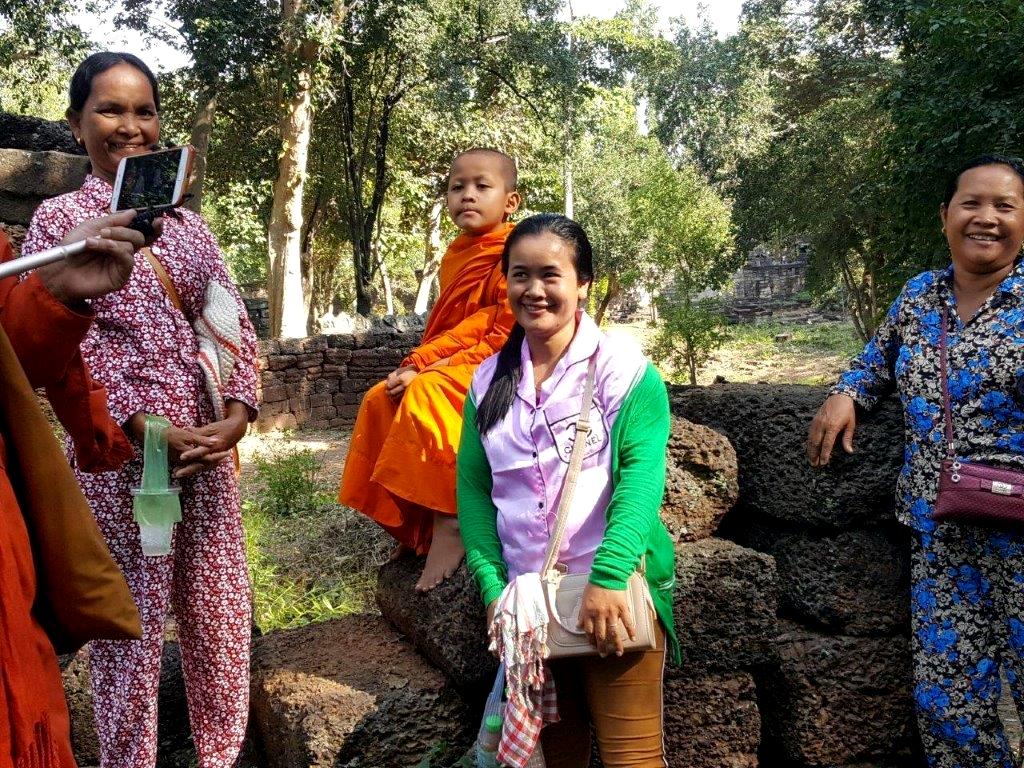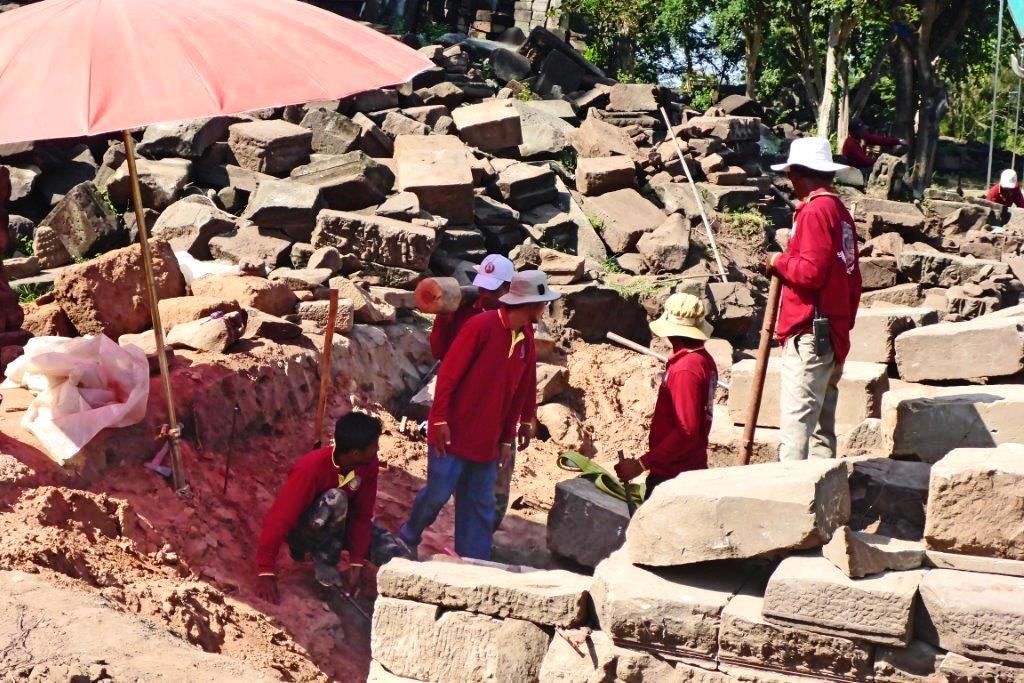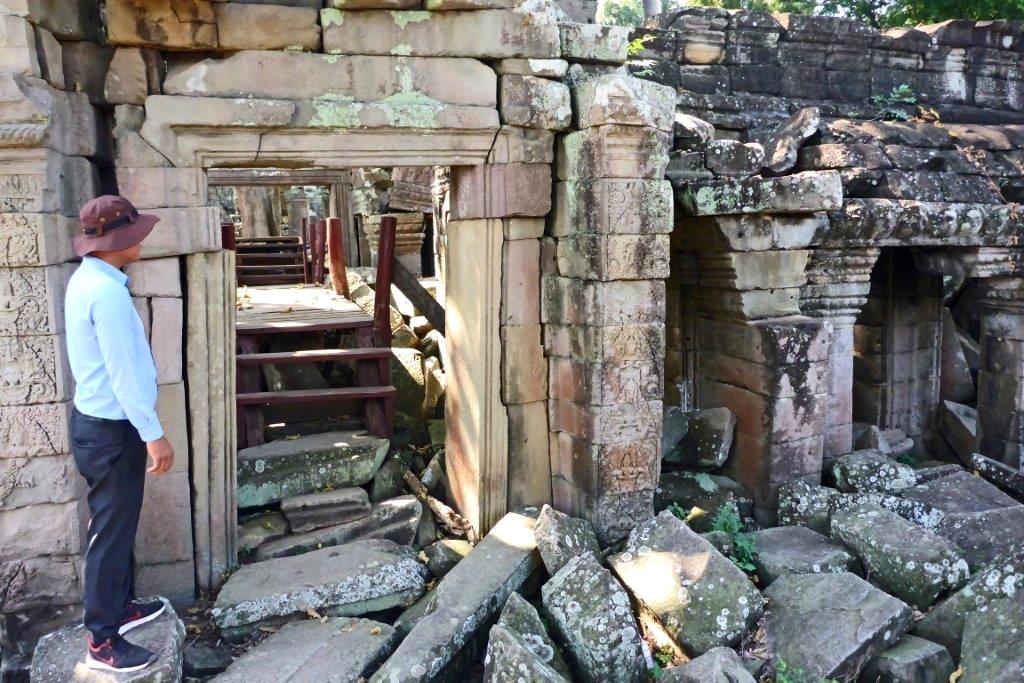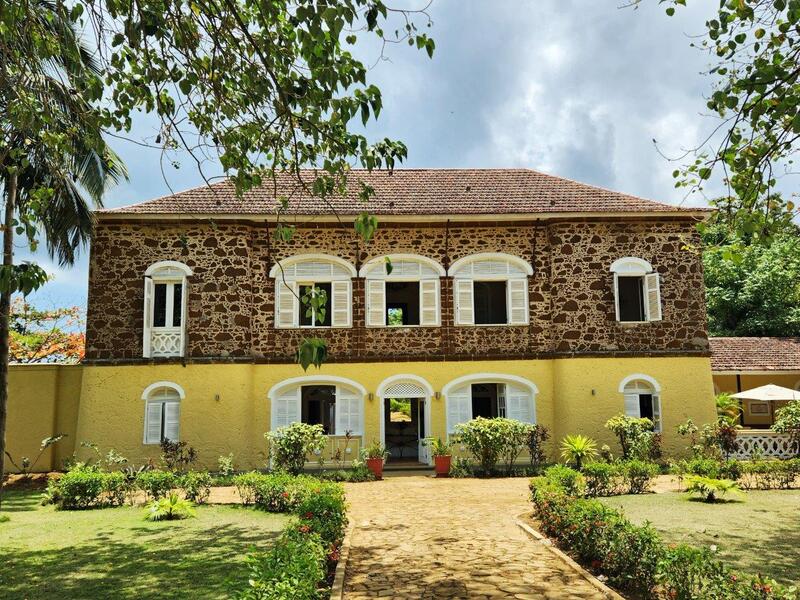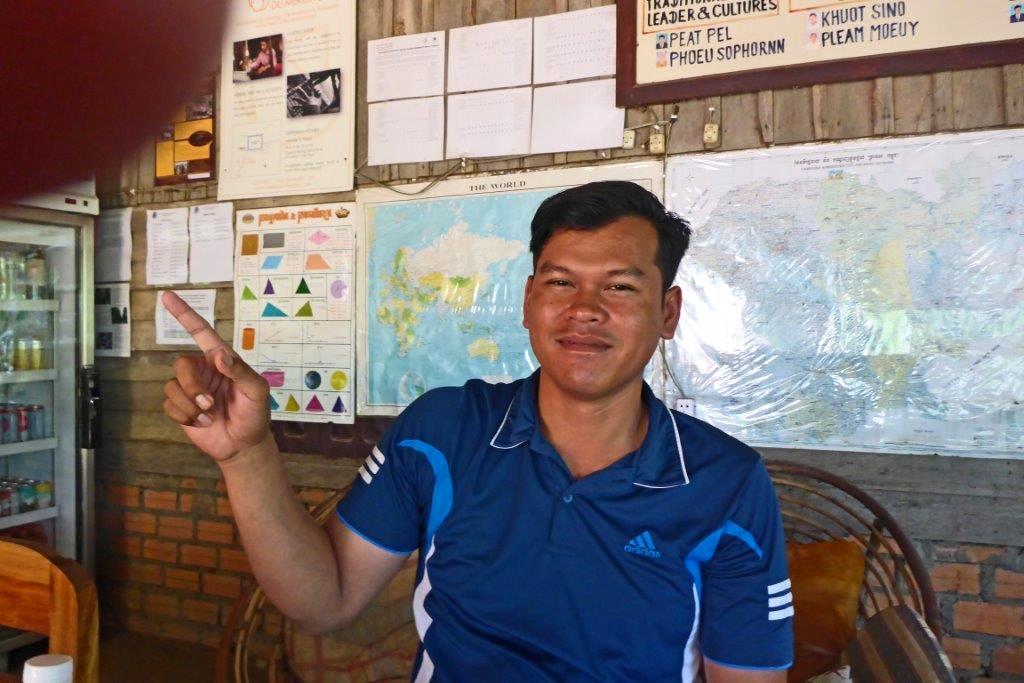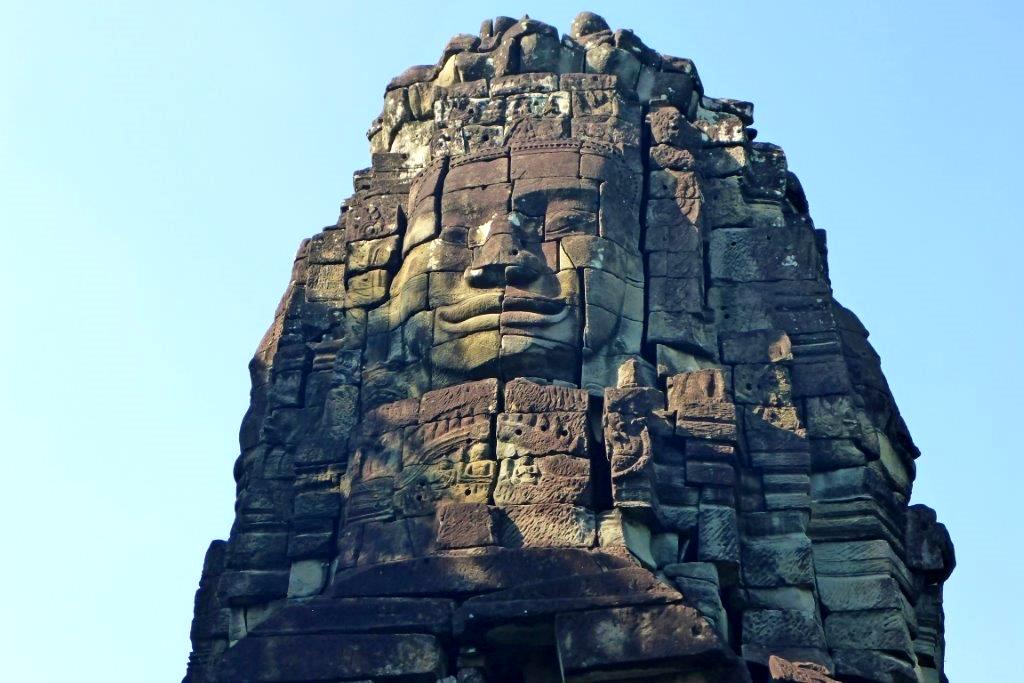Cambodia elephant sanctuary
By Edward Placidi. Edward Placidi is a freelance travel/food writer and photographer who discovered his passion for exploring the world as a teenager and has gone on to travel ‒ mainly on solo, independent adventures ‒ in 102 countries (so far). He has penned articles for numerous newspapers, magazines and websites. When not traveling he is whipping up delicious dishes inspired by his Tuscan grandmother with as many ingredients as possible coming from his organic vegetable and herb garden.
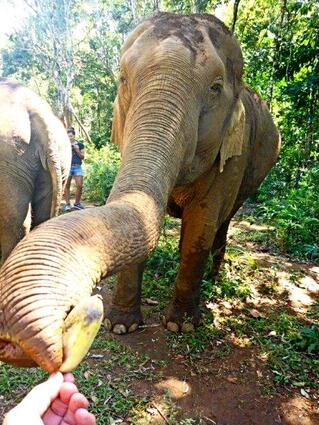
We hiked deeper into her territory, the mahout calling out her name, when suddenly Comvine, the sanctuary’s largest elephant, was standing in front of us. She was peering at us intently with her small but sensitive eyes. There was a moment of palpable apprehension as we faced a five-ton wild animal.
To make friends, we came bearing gifts ‒ the unpeeled, sweet bananas that are the elephants’ favorite food ‒ and Comvine gulped them down as fast as we fed them to her. We followed a well-established feeding procedure: one banana at a time held with a few fingers by the end (to avoid your hand getting confused with the fruit), do not tease by pulling the banana away (or you might get knocked) and don’t grab the trunk (or you may be launched in air).
When my bananas were gone, as instructed I opened my hands in front of me, palms toward the pachyderm, signaling I had no more fruit. A little sniffing around my person satisfied Comvine, and she moved on to the next person.
The Mondulkiri Project is an NGO combining a five-square-kilometer elephant sanctuary in Cambodia’s lush eastern highlands with an assistance program for the local Bunong people (who have struggled with the transition from a forest culture, which once provided all their needs, to life in the modern world), including paying for children’s schooling, providing jobs as tour guides, and food distribution. Tours – a one-day elephant experience, or a two-day option that adds an all-day hike and an overnight in the forest – fund the NGO.
“The money from tourists has enabled us to buy and care for our elephants, saving them from abusive owners, and also to help the local people,” said founder Mr. Tree (a moniker he uses to promote the NGO; his real name is Hong Ngun). The elephants were rescued from lives in logging or tourist rides – where the hard labor is often debilitating and can bring death from exhaustion and dehydration.
“We want the elephants to live in happiness,” enthused Mr. Tree, adding, “My greatest dream is to see a baby elephant born in the sanctuary.” That goal has eluded the project: the one male recently died without the arrival of a newborn, and they are hoping to buy another male soon.
To make friends, we came bearing gifts ‒ the unpeeled, sweet bananas that are the elephants’ favorite food ‒ and Comvine gulped them down as fast as we fed them to her. We followed a well-established feeding procedure: one banana at a time held with a few fingers by the end (to avoid your hand getting confused with the fruit), do not tease by pulling the banana away (or you might get knocked) and don’t grab the trunk (or you may be launched in air).
When my bananas were gone, as instructed I opened my hands in front of me, palms toward the pachyderm, signaling I had no more fruit. A little sniffing around my person satisfied Comvine, and she moved on to the next person.
The Mondulkiri Project is an NGO combining a five-square-kilometer elephant sanctuary in Cambodia’s lush eastern highlands with an assistance program for the local Bunong people (who have struggled with the transition from a forest culture, which once provided all their needs, to life in the modern world), including paying for children’s schooling, providing jobs as tour guides, and food distribution. Tours – a one-day elephant experience, or a two-day option that adds an all-day hike and an overnight in the forest – fund the NGO.
“The money from tourists has enabled us to buy and care for our elephants, saving them from abusive owners, and also to help the local people,” said founder Mr. Tree (a moniker he uses to promote the NGO; his real name is Hong Ngun). The elephants were rescued from lives in logging or tourist rides – where the hard labor is often debilitating and can bring death from exhaustion and dehydration.
“We want the elephants to live in happiness,” enthused Mr. Tree, adding, “My greatest dream is to see a baby elephant born in the sanctuary.” That goal has eluded the project: the one male recently died without the arrival of a newborn, and they are hoping to buy another male soon.
The two-day tour began with a seven-hour hike, an arduous march up and down the forested hills of tropical Mondulkiri province. We removed shoes, rolled up pants and forded a river, negotiating slimy, slippery rocks. Flashlight in hand, I entered a small cave when suddenly a merry-go-round of bats was circling my head. We marveled at massive, soaring banyan trees with their maze of twisted trunks.
We transitioned from the canopy-covered forest to open, savannah-like grasslands carpeted with wildflowers. One grassland became a farmer’s orchard with intensely fragrant kaffir lime trees and cashew trees laden with bright red blossoms.
When we first heard the cicada cacophony, we didn’t know what it was. The decibel level and shrillness were beyond anything I’d heard from cicadas. It was overwhelming at times, and it came and went as we hiked.
At one point we stopped to rest while our guide, jovial and engaging Mr. Krem, created shot glasses for each of us from bamboo for the rice wine to come that evening. He deftly sliced, peeled and shaved bamboo into small drinking vessels – but little did we know what Mr. Krem had in store for us when the sun went down.
We transitioned from the canopy-covered forest to open, savannah-like grasslands carpeted with wildflowers. One grassland became a farmer’s orchard with intensely fragrant kaffir lime trees and cashew trees laden with bright red blossoms.
When we first heard the cicada cacophony, we didn’t know what it was. The decibel level and shrillness were beyond anything I’d heard from cicadas. It was overwhelming at times, and it came and went as we hiked.
At one point we stopped to rest while our guide, jovial and engaging Mr. Krem, created shot glasses for each of us from bamboo for the rice wine to come that evening. He deftly sliced, peeled and shaved bamboo into small drinking vessels – but little did we know what Mr. Krem had in store for us when the sun went down.
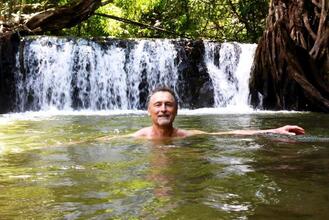
For lunch, we came to an idyllic river swimming hole with a waterfall cascading into a small pool. It was the perfect break: a refreshing swim after hours on the trail and a tasty meal (Mr. Krem opened his backpack to reveal garlic-fried pork, scrambled eggs and rice).
Setting out again, we descended a steep, rocky, wet path – a false step would bring a muddy, bruising slide down a watery chute – to a 60-foot-high waterfall that soaked us with its powerful spray.
Wildlife appeared occasionally – a group of monkeys swinging through the trees, a pair of Great Hornbills overhead, brilliant orange beaks standing out against the blue sky – but butterflies were everywhere, in yellow, iridescent blue, and myriad patterns.
Late afternoon we arrived at the rustic base camp of three A-frame thatched huts, two with hammocks and mosquito nets, the other a kitchen and eating area (no table only a hard wooden floor). Here we had our first elephant encounter. Mischievous, 3.5-ton Lucky galloped into camp, scattering the wide-eyed hikers, and ensconced himself at the kitchen door. Mr. Krem had told us elephants sometimes showed up at camp searching for more bananas. Lucky was lured away with a small bunch and sent on his way.
After a savory dinner of sweet and sour pork and traditional Bunong eggplant with chili sauce cooked in a just-cut green bamboo tube over a wood fire, the fun began. Krem set up a rice-wine card game, clearly his favorite part of being a guide. Grinning from ear to ear, he explained the rules as he poured us each a shot of the raspy firewater. After toasting, Mr. Krem proceeded to rig the game.
Clandestinely pulling multiple cards at a time, he was always the first to get four of a kind. Then he would nonchalantly pick up a spoon and laugh hysterically at the ensuing mad scramble for the remaining ones (the two who didn‘t get one of the spoons arrayed in the playing area had to down a shot). He would then gleefully fill the glasses of the moaning losers.
Setting out again, we descended a steep, rocky, wet path – a false step would bring a muddy, bruising slide down a watery chute – to a 60-foot-high waterfall that soaked us with its powerful spray.
Wildlife appeared occasionally – a group of monkeys swinging through the trees, a pair of Great Hornbills overhead, brilliant orange beaks standing out against the blue sky – but butterflies were everywhere, in yellow, iridescent blue, and myriad patterns.
Late afternoon we arrived at the rustic base camp of three A-frame thatched huts, two with hammocks and mosquito nets, the other a kitchen and eating area (no table only a hard wooden floor). Here we had our first elephant encounter. Mischievous, 3.5-ton Lucky galloped into camp, scattering the wide-eyed hikers, and ensconced himself at the kitchen door. Mr. Krem had told us elephants sometimes showed up at camp searching for more bananas. Lucky was lured away with a small bunch and sent on his way.
After a savory dinner of sweet and sour pork and traditional Bunong eggplant with chili sauce cooked in a just-cut green bamboo tube over a wood fire, the fun began. Krem set up a rice-wine card game, clearly his favorite part of being a guide. Grinning from ear to ear, he explained the rules as he poured us each a shot of the raspy firewater. After toasting, Mr. Krem proceeded to rig the game.
Clandestinely pulling multiple cards at a time, he was always the first to get four of a kind. Then he would nonchalantly pick up a spoon and laugh hysterically at the ensuing mad scramble for the remaining ones (the two who didn‘t get one of the spoons arrayed in the playing area had to down a shot). He would then gleefully fill the glasses of the moaning losers.
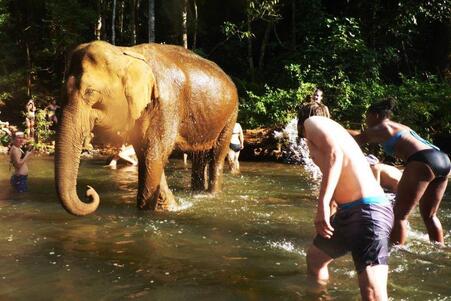
The next morning, after banana pancakes and coffee, we hiked into elephant ‘territory.’ The elephants are territorial and follow a daily routine. They each have staked out their area in the sanctuary where they spend most of their time, usually only leaving to bathe in the river each afternoon. Over several hours, we moved from territory to territory, elephant to elephant, feeding them bananas and walking with them in the forest. Having regular contact with humans, they appeared comfortable with us, and we incrementally more so with them. Eye to eye with Princess, the smallest of the sanctuary’s five elephants, knowing elephants have relatively weak vision, I wondered if she was evaluating me mostly with her strong sense of smell.
Mid afternoon we set off for the special elephant bathing spot in the river – and more warnings: don’t follow them into deep water because if they roll over they can accidentally crush you, and when splashing them don’t get water in their eyes or you might be whacked by a trunk. Bananas in hand, we were waiting as the behemoths arrived one by one.
Another banana feast gave way to exuberant splashing. It wasn’t clear who was enjoying it more, the humans doing the splashing or the happy elephants, as caked on mud and grass began to roll off their backs. It was difficult not to feel vulnerable, standing in waist-deep water amid huge pachyderms, yet it felt like a stronger bond was forming. And then they abruptly turned and lumbered off.
Less than an hour later we were ensconced at the spot in the river where they cross each day – seeing them for the last time before they returned to their territory for the night.
In the verdant eastern highlands, arguably Cambodia’s most beautiful topography, the inhabitants of the sanctuary now lead pleasant, well-fed lives with regular care from veterinarians. “They do what they want and are not forced to do anything, ” said Mr. Tree. Reinforcing his comments, that morning they had repeatedly called out to Sophie to come see the tourists, but she decided to do her own thing and stayed away.
About 150 travelers per month take a tour, and if that is sustained or increased, a male may be purchased in the near future. And then perhaps Mr. Tree’s dream of a baby elephant will come true.
Mid afternoon we set off for the special elephant bathing spot in the river – and more warnings: don’t follow them into deep water because if they roll over they can accidentally crush you, and when splashing them don’t get water in their eyes or you might be whacked by a trunk. Bananas in hand, we were waiting as the behemoths arrived one by one.
Another banana feast gave way to exuberant splashing. It wasn’t clear who was enjoying it more, the humans doing the splashing or the happy elephants, as caked on mud and grass began to roll off their backs. It was difficult not to feel vulnerable, standing in waist-deep water amid huge pachyderms, yet it felt like a stronger bond was forming. And then they abruptly turned and lumbered off.
Less than an hour later we were ensconced at the spot in the river where they cross each day – seeing them for the last time before they returned to their territory for the night.
In the verdant eastern highlands, arguably Cambodia’s most beautiful topography, the inhabitants of the sanctuary now lead pleasant, well-fed lives with regular care from veterinarians. “They do what they want and are not forced to do anything, ” said Mr. Tree. Reinforcing his comments, that morning they had repeatedly called out to Sophie to come see the tourists, but she decided to do her own thing and stayed away.
About 150 travelers per month take a tour, and if that is sustained or increased, a male may be purchased in the near future. And then perhaps Mr. Tree’s dream of a baby elephant will come true.
IF YOU GO
For more tour information and booking: www.mondulkiriproject.org email [email protected]. The one day elephant experience tour is $40; the two-day option that adds an all-day hike and overnight in the forest is $80.
The elephant sanctuary is outside Sen Monorom, the capital of Mondulkiri province, which can only be reached by road. A number of bus companies offer service from Phnom Penh. Ritha Express runs comfortable mini vans for $11 each way; the trip takes about six hours; Most hotels in Phnom Penh can book your seat including pickup at the hotel.
The Tree Lodge: Located in the countryside near Sen Monorom, and run by Mr. Tree, this is the base hotel for the Mondulkiri Project. The rustic lodge has basic wood cabins, a restaurant serving Western and Khmer food, and a large elevated deck with trees growing through it with panoramic views of the forest. Doubles from $7. Tel.: +855 (0) 97 723 4177, www.treelodgecambodia.com email [email protected]
For more tour information and booking: www.mondulkiriproject.org email [email protected]. The one day elephant experience tour is $40; the two-day option that adds an all-day hike and overnight in the forest is $80.
The elephant sanctuary is outside Sen Monorom, the capital of Mondulkiri province, which can only be reached by road. A number of bus companies offer service from Phnom Penh. Ritha Express runs comfortable mini vans for $11 each way; the trip takes about six hours; Most hotels in Phnom Penh can book your seat including pickup at the hotel.
The Tree Lodge: Located in the countryside near Sen Monorom, and run by Mr. Tree, this is the base hotel for the Mondulkiri Project. The rustic lodge has basic wood cabins, a restaurant serving Western and Khmer food, and a large elevated deck with trees growing through it with panoramic views of the forest. Doubles from $7. Tel.: +855 (0) 97 723 4177, www.treelodgecambodia.com email [email protected]
|
Images copyright of the author
Click on any image to enlarge it |
